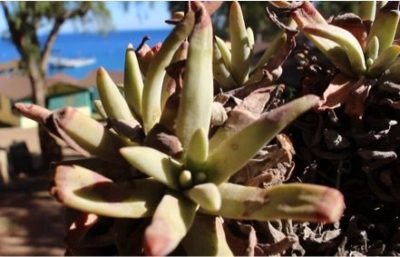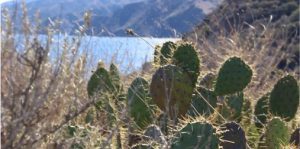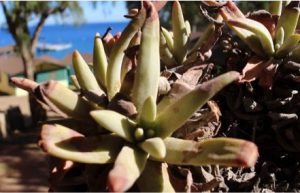
 If you have ever visited CIMI, the chances that a Prickly Pear Cactus victimized you are highly likely. I know my feet have suffered many times on leisure hikes from those pesky spines that borrow into your skin and call your little toe-piglets home for several days. Let’s not jump to the chase, although, and show some appreciation for these super-plants and all others like it. These herbaceous beauties spend their days surviving in the hot sun and living in dry, rainless conditions. We call these types of plants, succulents.
If you have ever visited CIMI, the chances that a Prickly Pear Cactus victimized you are highly likely. I know my feet have suffered many times on leisure hikes from those pesky spines that borrow into your skin and call your little toe-piglets home for several days. Let’s not jump to the chase, although, and show some appreciation for these super-plants and all others like it. These herbaceous beauties spend their days surviving in the hot sun and living in dry, rainless conditions. We call these types of plants, succulents.
Now you may be unfamiliar of this name or some examples from this group, but more than likely you have once owned or shared property with a succulent plant, or have even used one to help relieve some of your past shameful sunburns. But lets not get too personal just yet…
 A succulent is a type of plant that exhibits characteristic swollen, fleshy leaves and stems that are used for the soul purpose of retaining water. Naturally, these plants grow and thrive in extreme environments, particularly those where there’s minimal rainfall and dry air and soil. The most common examples of this group include cacti and medicine plants, such as aloe vera. Here on Catalina Island, the most prominent of succulents is the Prickly-Pear Cactus. These fellows lavish the hillsides with their spiny, lobed blades and occasional juicy, red tunas and yellow flowers. We also have our endemic Catalina Island Live-Forever and its invasive doppelgänger, the Ice Plant.
A succulent is a type of plant that exhibits characteristic swollen, fleshy leaves and stems that are used for the soul purpose of retaining water. Naturally, these plants grow and thrive in extreme environments, particularly those where there’s minimal rainfall and dry air and soil. The most common examples of this group include cacti and medicine plants, such as aloe vera. Here on Catalina Island, the most prominent of succulents is the Prickly-Pear Cactus. These fellows lavish the hillsides with their spiny, lobed blades and occasional juicy, red tunas and yellow flowers. We also have our endemic Catalina Island Live-Forever and its invasive doppelgänger, the Ice Plant.
So how do these plants manage to survive in such arid, drought-ridden environments? The answer lies within a specialized form of photosynthesis, called Crassulacean Acid Metabolism or CAM. During normal photosynthesis, pores called stomata located throughout a plant’s epidermis open up during the day to take in carbon dioxide from the air. This gas, along with water stored within, undergo a chemical reaction using the sun’s energy to produce it’s own food, in the form of sugar, and breathable oxygen. While these stomata are open, water from within the plant escapes back into the air through transpiration. The cycle then repeats. With CAM plants, such as our succulents, these stomata stay closed during the day, but open at night when the sun is set. This allows the succulents to prevent any water loss during the day and collect carbon dioxide. The carbon dioxide is then stored within the plant’s cells overnight and is later accessed in the daytime to complete photosynthesis.
The next time you make your way out to CIMI, or Catalina Island, be on the lookout for these guys as your hike around. Just remember to look for swollen, meaty appendages, and bushes of spines when you are searching around. While you are at home, look around in your own yard and even think about adopting some of your own succulents. Their beauty is diverse and unique, plus you may find some household and medicinal uses for them that could come in handy one day. Oh, and did I mention they are great water conservationists? Say hello to drought-friendly décor!
Written by: John Cornett


